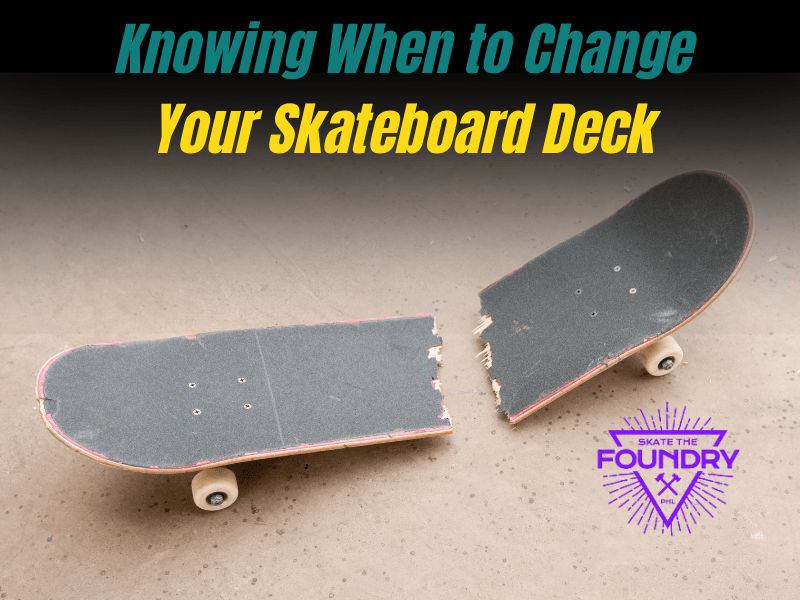Knowing When to Change Your Skateboard Deck

Skateboarding is not just about rolling down the streets and doing tricks; it’s also about maintaining your equipment to ensure safety and optimal performance. One of the key components of your skateboard is the deck, and knowing when to replace it can save you from injuries and improve your skateboarding experience. So, when is the right time to change your skateboard deck? Here’s a detailed blog based on common signs and indicators.
Skateboard decks have varying lifespans that can range from a few days to several years, depending heavily on usage, riding style, and the quality of the deck. Frequent skaters, especially those doing tricks and riding in rough terrains, might find themselves replacing their decks more often than casual riders. You don’t want to snap that board while doing a boardslide for sure!
How to know when to change your deck?
- Loss of Pop: One of the first signs that your deck needs replacing is a noticeable decrease in its pop, the springy feel that helps you perform tricks. If your deck feels soft and less responsive, it’s probably time to consider a new one. Based on my personal skateboarding experience, this is pretty common after using the deck for a while.
- Visible Cracks: Regular checks for cracks are important. Cracks, particularly near the trucks where the deck bears most stress, can suddenly snap during use. A cracked deck is not just a performance issue but a safety hazard.
- Chips: Chips usually occur on the nose and tail of the skateboard. While small chips might not immediately affect your ride, significant chipping can alter the deck’s structural integrity and affect your ability to perform tricks accurately. A badly chipped deck can also weaken the pop during tricks.
- Water Damage: Waterlogged decks are prone to delamination, where the layers of the deck start separating. This weakens the deck and makes it unpredictable during rides. If your deck has been exposed to water, it’s wise to check for signs of swelling or layers peeling apart.
- Complete Breaks: The most obvious sign that you need a new deck is if it’s snapped. Continuing to skate on a broken deck is dangerous and can lead to severe injuries.
Prioritize Safety
Always prioritize your safety. If something feels off while you’re riding—maybe the board feels different or you’re hearing unusual sounds—take the time to inspect your deck closely. When in doubt, take your skateboard to a local skate shop for a professional assessment. Often, the experts can spot potential problems you might miss.
To extend the life of your skateboard deck, consider these tips:
- Avoid skating in wet conditions, especially rain, to prevent water damage.
- Store your skateboard in a cool, dry place, and out of direct sunlight. Direct sunlight can affect the wood quality and the resin glue used in the skateboard plys.
- Regularly check for signs of wear and tear, especially if you perform a lot of tricks.
Replacing your skateboard deck at the right time is more cost-effective than dealing with injuries from a failed trick due to a faulty deck. Keep an eye on the condition of your deck, and don’t hesitate to replace it when you notice significant wear. This not only ensures your safety but also enhances your overall skateboarding experience.
Need Our Assistance? We’re here for you! Just drop us an email with any questions or if you need any assistance in changing your skateboard deck, and we’ll help you choose the right one for you.
